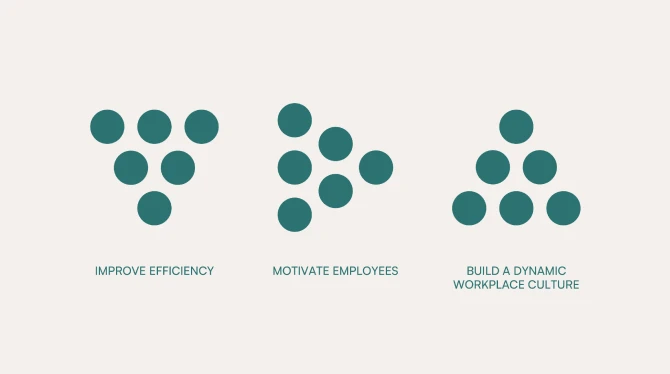📺
Influence Of TV On Graphic Design
LAST UPDATED 16 May, 2024
In the evolving narrative of visual communication, television stands as an unsung maestro, a prominent fixture in our living rooms that has left an indelible mark on contemporary graphic design.
Television, with its flickering screens and captivating narratives, has been more than just an electronic appliance; it has been a portal to creativity, a gateway to imagination, and a silent mentor to many aspiring designers. Born into the world of analog nostalgia but raised amidst the digital revolution, generations have experienced a unique intersection of technological epochs.
Cartoons like Looney Tunes and Tom and Jerry weren’t just entertainment, they were classrooms in the art of animation. Each frame taught about motion, timing, and the power of visual storytelling. Beyond cartoons, the music videos of MTV ignited senses, blending sound and image into a symphony of creativity.
The MTV 100 Hits list wasn’t just a collection of songs; it was a visual journey into innovative graphics and design, laying the groundwork for a future where music and visuals would intertwine seamlessly.


Television’s Silent Influence
In its silent wisdom, television became more than just a device, it became a mentor. It guided through the nuances of composition, framing, and visual narrative, shaping aesthetic sensibilities without overt recognition. From the warmth of living rooms, it whispered lessons in design that would echo through creative endeavors.
As we navigate the currents of visual communication, we find ourselves indebted to the subtle teachings of the screen. It has been a companion, a confidant, and a catalyst for creative journeys. In the evolving landscape of graphic design, the influence of television remains steadfast, an ever-present muse guiding towards new horizons of creativity.
Crafting Stories In Color
As our parents’ childhood pixels transformed from black-and-white to color, the TV screen became a canvas where vibrant hues breathed life into narratives. This shift marked a profound transformation in how stories visually unfolded. Animated classics like The Flintstones and Scooby-Doo were not just colorful spectacles, they were early showcases of color theory, composition, and character design.
These early encounters weren’t merely entertainment, they laid the groundwork for a lifelong passion for visual storytelling. It wasn’t just about the introduction of color, it was an initiation into crafting narratives through visuals-an art form that would soon become the focal point of creative pursuits.

The advent of color didn’t just broaden the visual spectrum, it added a new dimension to storytelling. The vivid hues mirrored the kaleidoscope of imagination, enchanting the viewer by the graphic storytelling prowess of these shows. The introduction of color in TV narratives was transformative, influencing not only the visual spectrum but also shaping a lifelong passion for visual storytelling through captivating animated classics, providing early exposure to color theory, composition, and character design.

The Pioneering Era: TV Graphics in the Mid-20th Century
Television was not just about animated tales, it became a canvas for artistic expression in pioneering shows. Take for instance I Love Lucy, which added another layer to the visual tapestry with its playful animated introduction and vibrant typography. The meticulous attention to detail in crafting the show’s visual identity left an indelible mark, shaping early understanding of the seamless integration of graphics into storytelling.

Amid these shows, television commercials quietly shaped the artistic landscape. Consider the iconic Marlboro Man advertisements, with its rugged cowboy imagery. This powerful graphic design not only sold cigarettes but also became a cultural symbol, showcasing the profound impact of TV graphics on shaping perceptions.

Moreover, the iconic Twilight Zone introduced us to the power of atmospheric visuals and imaginative storytelling, pushing the boundaries of what was possible within the constraints of the TV screen.

Pioneering TV shows and commercials introduced innovative graphic design elements, influencing storytelling visuals, and leaving lasting imprints on creative consciousness by showcasing the power of typography, symbolism, and atmospheric visuals.
As we reflect on the historical evolution of visual media, it becomes evident that both print and television have played instrumental roles in shaping consumer behavior and societal values.1 By examining the parallels between these mediums, we gain deeper insights into the enduring impact of visual communication on human perception and cultural identity.
Shaping Tomorrow: The Enduring Legacy Of TV
As we immerse ourselves in the digital age, it’s intriguing to see how TV’s influence, including its iconic advertisements, has seamlessly woven into contemporary graphic design. From color schemes to font pairings, photography to layouts and compositions, the pixels that once danced on analog screens now populate our digital screens, carrying forward the legacy of a bygone era.
Marketing too bears TV’s fingerprints. The succinct yet powerful visual language mastered by TVC’s has become the gold standard for grabbing audience attention. Icons like the timeless Coca-Cola polar bear find their virtual counterparts in memes and shareable content across platforms. Advertising, in the age of social media, has embraced graphic design principles learned from the TV era. From strategic photography to evoke emotions to carefully selected typography communicating brand personality, every element nods to TV screen lessons.


As we stand at the precipice of the future, TV’s legacy extends beyond its original frame. It manifests in defining online experiences, narratives captivating us on social media, and strategic designs driving advertising campaigns. The screens, once fixtures of our living rooms, now extend into the vast digital landscape, promising new tales, fresh perspectives, and boundless possibilities.
TV’s enduring legacy is evident in the seamless integration of its design principles into contemporary graphic design, influencing everything from iconic brand symbols to the strategic use of color and perpetuating its impact into the future by shaping the visual language of online experiences and advertising.
Moreover, the exploration of motion and animation as inheritors of TV’s legacy offers valuable insights into modern marketing strategies.2 Just as television captivated audiences with dynamic visuals, animation on social media platforms presents a captivating means of engagement. By leveraging the principles of motion graphics, businesses can create immersive brand experiences and connect with their audiences on a deeper level.


